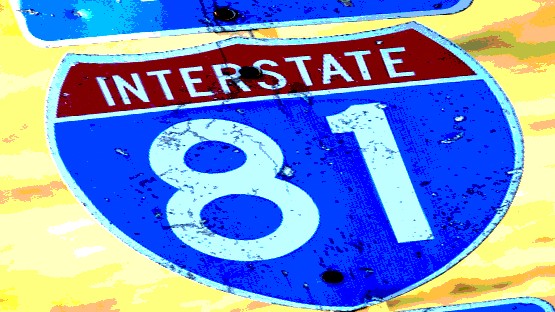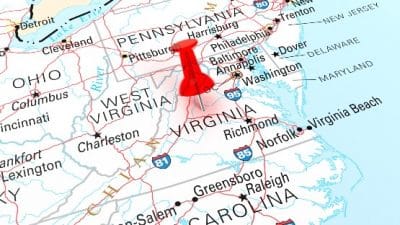
The pundits are suggesting that Gillespie’s showing is a sign that the reports that Virginia had once and for all turned blue were grossly exaggerated, when in fact any suggestion that Virginia had turned blue is itself exaggerated.
Sure, Democrats, with Warner’s victory on Tuesday, have now won the last six statewide contests – the presidential and Senate races in 2012, all three state-ticket races in 2013 and the Senate race in 2014 – but Virginia is still very much a purple state. The 2009 state cycle saw Republicans sweep all three of those races. The 2010, 2012 and 2014 congressional races have strongly favored Republicans, even conceding that the advantage in representation numbers for the GOP, which controls eight of the state’s 11 congressional seats, is as much a factor of gerrymandering as anything else.
Bottom line: Virginia wasn’t, isn’t blue, it isn’t red, it’s purple, meaning it’s competitive politically, and meaning that even a surefire done deal like Mark Warner getting re-elected is anything but a surefire done deal.
In that context, then, it can make sense how polls could say one thing, that Mark Warner had a big lead all spring, all summer and most of the fall, and then had to eke out a win on Election Day. Gillespie pulled in about 80 percent of what jim gilmore did in 2008 and is being viewed as a political hero by Republican partisans only because Mark Warner saw his raw-vote total cut by more than half.
Warner received 2.37 million votes in his 2008 Senate race, which of course coincided with the first run for president by Barack Obama, whose sophisticated campaign operation can be credited for the talk that Virginia was turning blue. Obama’s re-election campaign in 2012 ramped up at the same time that another former Virginia governor, Tim Kaine, was facing a challenge from former governor and senator George Allen, and Kaine no doubt benefited, as did Warner, from running in the Obama wave, receiving 2.01 million votes to top Allen’s 1.79 million.
The Obama operation showed its limits in 2010. With more than 3.6 million votes cast in Virginia in 2008 and close to 3.8 million cast in 2012, the 2010 midterms saw just over 2.2 million votes cast, which is significant in that Democrats lost two House seats in that cycle.
What was overall turnout in the 2014 midterms? Keeping in mind that 2010 did not feature a statewide race, the turnout in that cycle surprisingly outpaced 2014, with 2.1 million voters casting ballots yesterday. The downturn was most pronounced in Democrat-vote-heavy Northern Virginia. Fairfax County, for example, had 306,000 voters in 2014 with the Senate race at the top of the ballot, a slight uptick from the 305,000 voting in 2010 with no Senate race on the ticket, a less than 1 percent increase. Arlington County, another Democratic stronghold, was at 65,000 voters in 2014 and 63,000 in 2010, a roughly 3 percent increase. Richmond saw a dip to 48,000 in 2014 from 50,000 in 2010. Norfolk also saw its turnout decrease in 2014, to 42,000 from 46,000 in 2010.
Republican voting strongholds showed added intensity in looking at the two midterms. Rockingham County and Augusta County were both in the neighborhood of 20,000 voters in the 2014 cycle; both were in the range of 18,000 in 2010, reflecting a roughly 9 percent increase in turnout from 2010 to 2014.
So you had more voters in Republican strongholds coming out, and you had more voters in Democratic strongholds staying home. The narrative that was being fleshed out by the pundits last night when the returns started coming in, then, that had Gillespie successful in selling his story to the voters that Warner had abandoned his moderate credentials to become a Washington insider, and that had Warner finally losing his golden touch with Virginians forged on his record as a talented businessman who knows how to get things done, begins to fall apart when you look at the numbers.
Give credit to the Gillespie team for one thing: getting its voters energized and then to the polls. The comparisons to 2008 and 2012 show that victory was more possible than it even seems today knowing what we know now, that the race was surprisingly close given what the pre-election polls had been telling us.
The Warner team, for its part, isn’t necessarily to be faulted for its failure to get its much bigger coalition out to the polls, though that fault can be held in reserve as we parse through what happened this week. At first glance, yeah, sure, Warner’s numbers cratered from 2008, but of course that was a far different era, with voters weary of the George W. Bush years and ready for a change, Obama offering a glimpse of changes to come, and then the Obama campaign operation not leaving change to chance, putting together a field operation that all future field operations, Democrat and Republican, will use as a guide.
The 2014 cycle is more reminiscent of 2000, when Democrats, most notably presidential nominee Al Gore, decided to run away from two-term president Bill Clinton, opting for a fresh start even as Clinton’s approval ratings were somewhat surprisingly high both for a president finishing out a second term and one who had been impeached two years earlier in the fallout from the Monica Lewinsky scandal.
The run-from-Clinton strategy famously backfired on Gore and down-ticket Dems, and there could have been an element of the 2014 run-from-Obama strategy at play in what we’re otherwise seeing as a Republican wave. We’d already seen that the 2010 midterms were a problem for the Obama team, which wasn’t able to translate its prowess in 2008 and its impressive follow-up performance in 2012 in an off-year election cycle. The 2014 midterms, then, could be the result of the limits of an operation that is at its optimum in a presidential year, but also the failure to energize the voter base that formed the foundation of the Obama voter coalition in the first place.
The Warner team, to its credit, foresaw … something. The candidate agreed to an aggressive schedule of debates back when Gillespie was so far behind in the polls that ignoring him wouldn’t have given anyone in the punditry class a reason to question why. And then we saw the Warner camp come out swinging, for blood, in the last two weeks of the cycle with a series of attack TV ads kneecapping Gillespie as a career lobbyist and trying to anchor him down to his time lobbying for Enron.
The Warner folks saw something coming, tried to do something about it, and hung on by the last strand of DNA in their pinky fingernails to snatch victory from the jaws of defeat.
So maybe, just maybe, Mark Warner should be the hero of the 2014 midterms for Democrats, as the last line of defense still standing in the face of a Republican wave that swept the rest of the forces helplessly out to sea.
– Column by Chris Graham










